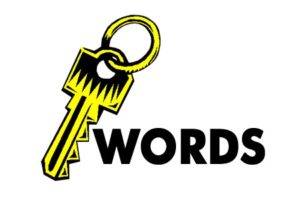

Are you thinking that 2022 is the year you really want to score that executive-level position with your company? Or for a completely new organization? Either way, you’re going to want to have your marketing tools ready for the new year-new job search adventure, and being able to present hiring managers and recruiters a targeted, executive-level resume is the first step in the process.
Whether you haven’t updated your resume in 20 years or two, it’s still necessary to take a long inventory of what is currently on the resume, what needs to be added, and what you can do to make it better. Here are a few tips to get you started…
THE BASICS:
Everybody knows that you should have your contact information, work experience, and education on your resume. However, this information still needs to be strategically written and displayed, so that it stands out and doesn’t just look like a pile of information you quickly plopped on a piece of paper.
- In your contact information, include your name (professional), relevant credentials (CPA, MBA, PhD, etc.), phone number (mobile is preferred), email address (personal-not work or school email), and your location (city/state is sufficient). Your name should be bigger and stand out more than the rest of your information, which should be displayed professionally, either after or underneath your name. Include the word “LinkedIn,” and link your resume to your online profile, if, and only if, your online profile is complete and optimized for your new job search. (It needs to send the same message as your resume.)
- Your career history needs to start out with a strong title. PLEASE do not use the words “work” or “employment” in your title. Think of how an executive would talk about his/her career. “Professional Experience,” “Career Narrative,” or “Career Chronology” are some other options. Write this section so that it is keyword-saturated, achievement-focused, and achievements are quantified where possible. If you were a sales leader or in a position where you made an impact in growing business or revenue, this is your opportunity to share this information! Use creative/colored bullet symbols to separate your achievements, and ensure that your job titles and years in each position are accurate.
- If you are a new graduate, your education information can be listed at the top of your resume. If you are NOT a new graduate, this section should follow your career history and, depending on how long ago you graduated, you may want to leave the years out of this section. If you make the title “Education & Credentials” (or something of that nature), you can also include any relevant certifications and professional development/training here.
THE EXECUTIVE NEEDS:
Now that you have the basics started, there are other things you need to include in your resume to tell your story, appeal to the reader, and ultimately market yourself effectively for the job you’re vying for.
Career Summary
- Use industry-specific keywords and powerful descriptors to paint a brief introductory picture of who you are, what you have done, and the value you can provide in an executive-level role.
Branding
- Branding is KEY! Come up with a branding statement or at least some type of title at the top of your career summary, so that the reader knows immediately what level you’re at (or want to be at).
- What are you known for? What are you good at? What do you love to do? What do you want to continue to do in your next role?
- You could also just use a few key terms or even multiple titles (COO, CFO, etc.) to show the reader this information.
Career Highlights
- If you want to communicate some of your best career successes, adding a “Career Highlights” section just before your employment history is a great idea. Include 3-5 bullets of your biggest career achievements (successful programs you’ve implemented, process improvements, cost reductions); anything that shows where your leadership resulted in a positive outcome for a client or an organization.
- Think “results-rich” statements when you are deciding on what to add. Think METRICS. Where did you generate millions in cost savings? What strategies or deep dives did you conduct to see where there were holes and money drains?
Soft Skills
- How are your problem-solving skills? Do you shine when listening and communicating to your team? Are you good at critical thinking? What about conflict management? Don’t underestimate the power of your soft skills. Companies are hungry for that balance.
Board Leadership & Affiliations
- Companies want to hire executives who have industry knowledge and can work with Boards of Directors and/or other c-suite teams. Include your memberships in professional organizations, as well as any board experience you have (paid/volunteer).
Pandemic Information
- How were you able to flex and adapt during the pandemic? What changes have you made, contributed to, or implemented relating to the pandemic? What role did you lay?
Format
- Want to level up? Then you better level up the look of your resume. Your format needs to stand out just like your content, so PLEASE, do not do a simple black/white, 12-point Times Roman font for your entire resume! Add some pizzazz! A little bit of color goes a long way in getting your resume to stand out in the pile–and is also very appealing to the eye.
Additionally, including language proficiencies (if you’re seeking a global position), honors, awards, publications, etc., anything that can help the reader to truly get to know you in the brief few seconds taken to scan the resume.
These are just a few things you can do to ensure that your resume is on target to give a strategically written chronology of exactly who you are, what you have accomplished, and the value you can provide in an executive-level position in 2022.








